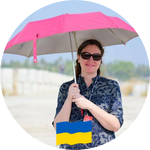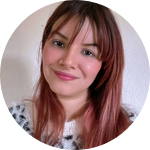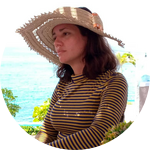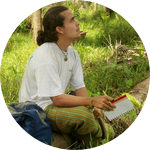Project Results
We are thrilled to share with you the preparations for our upcoming fieldwork. As part of this exciting project, we have designed a survey that will actively engage our participants. We want to listen to their voices of the community and have their valuable participation.
Our survey serves multiple important purposes. Through it, we aim to gather valuable information about the opinions, interests, perceptions, and preferences of the participants. We want to delve deep into their vision and collect relevant information to guide the project's development.
One of the primary objectives of the survey is to understand the actions that participants consider important to maintain the beach in good condition. We are interested to know, which measures they prioritize in terms of cleanliness and conservation. Additionally, we will evaluate their willingness to participate in future activities related to the protection of our beaches.
In the survey, they will also have the opportunity to express the types of conservation activities in which they would like to participate. We will ask questions such as: Are you interested in planting trees and plants, observing and caring for marine species, promoting awareness through educational campaigns, recycling, or cleaning the beach? We want to learn about their preferences and conservation aspirations to understand what drives them to participate!
Furthermore, we would like to know if they would like to receive information and news about conservation projects at the beach. Their interest in staying updated will help us keep them informed about progress and opportunities related to coastal conservation. Additionally, we are interested in knowing how much value they place on preserving the natural environment of the beach.
The survey will also provide us with the opportunity to identify the main pollution problems on the beach from your perspective. Their insights are crucial for understanding the challenges we face and finding effective solutions.
Moreover, we would love to know if they liked the prototype, if it left an impact on them, and if it led to any changes in their life. We are also interested in whether they would be interested in volunteering for Biciola. That's why we ask if they would be willing to make some changes in their consumption habits or plastic usage in their daily life, inspired by the Biciola experience. Additionally, we would be delighted to know if this experience has transformed their perception of the beach.
Of course, we are also interested in learning more about our participants. Therefore, we will request relevant demographic information, such as age range, gender, education level, and current location. This information will allow us to tailor our strategies and activities to effectively meet their needs and preferences.
Furthermore, the collected demographic information will provide us with an overview of the diversity among the participants. This will help us design inclusive communication and participation strategies where everyone can feel represented and heard.
We are eager to receive their responses and value their contribution to this exciting project. Active community participation will be crucial in achieving a positive impact on the conservation of our beaches and coastal ecosystems.
We will continue to update you on the progress of this wonderful Biciola adventure!
About This Project
Our team is developing a microplastic removal machine to filter and strain contaminated sand effectively. We call it Biciola, and we plan to build one machine and install it on a public beach in Venezuela. To test the bike, we will offer conservation talks to the community and encourage people to clean the beach through various incentives. These volunteers will provide us with valuable data. Biciola is a powerful tool for raising awareness among residents and bringing communities together.
Ask the Scientists
Join The DiscussionWhat is the context of this research?
Plastic is one of the biggest challenges of the Anthropocene. When plastics face natural forces, they degrade into microplastics <5mm. These particles will multiply over the next years, affecting our biodiversity, ecosystems and health. Europe, Australia and North America have made efforts to remove microplastics, but Latin-America has not. So, we want to test Biciola in Venezuela, a country with severe social and environmental crisis. Biciola will be installed on public beaches to test various incentives. Financial incentives have become relevant in conservation. However, studies combining diverse types of stimuli using plastics have not been found. Therefore, we will assess non-monetary incentives to evaluate participants' involvement.
What is the significance of this project?
Biciola is an inexpensive, low-tech device for cleaning beaches, which could be implemented in many developing countries. With Biciola, we can better understand what motivates behavior change in Latin America to increase conservation incentives' effectiveness over time. This project promotes transformative adaptation and is "a seed for change" with attributes of resilience: diversity, redundancy, connectivity, inclusion, equity, and adaptive learning. Pedaling Biciola is a healthy and enjoyable activity, and a powerful opportunity to promote resilience in the community while cleaning beaches. Participants' data will be collected to understand different patterns that boost Biciola usage in various sectors and contexts to create effective strategies for Latin-America.
What are the goals of the project?
Our main goal is to create an effective strategy to tackle microplastics problems in coastal areas of the Global South. Our device filters and strains microplastic from sand. Based on granulometry testing, we will use mashes adapted to local grain sizes. The efficacy will be measured by optimizing microplastic filtering in the study area. Community engagement will be measured through a social experiment based on multiple incentives, surveys and interviews to participants. Participants' data will be collected and compared to understand different patterns that boost Biciola usage in various sectors to increase desirable responses over time. We will use social media channels to promote citizen science, spread educational information, and measure our interactions with the community.
Budget
This Project would be the pilot study for testing our Prototype, growing trust with actions, networking, and motivating the team to create a collective change. We will analyze our data and summarize our results for a technical report and a scientific paper to offer insights into what motivates behavior change to achieve better outcomes. We will offer environmental education about microplastic pollution through our social media and through various community talks. We also expect to assess our microplastic samples in a laboratory to shed light on the composition of typical plastics at these beaches and improve the next Biciola prototype. The budget was made based on a low-cost prototype and the collaboration of local stakeholders' support. The Prototype has been reviewed by different mentors' experts in this field, especially from research centers in Hawaii with vast experience in engineering devices for cleaning microplastic pollution.
Endorsed by
 Project Timeline
Project Timeline
We plan to build and install a Biciola prototype on a public beach in Venezuela. The study site would be Guacuco on Margarita Island, Nueva Esparta. Beaches there have high energy, wide surf zones, and fine sand. We will use a specific mesh size to avoid capturing sand, coral, and rocks. A team member will supervise all activities in the field, offer talks to stakeholders/visitors, and collect volunteers' demographic information. Also, ensure the Biciolas' welfare throughout the project.
Mar 01, 2023
Project Launched
May 01, 2023
Project Launched
Jun 01, 2023
Contact local government to fulfill the requirements for the prototype installation.
Jun 05, 2023
Build up the Biciola prototype.
Jun 07, 2023
Run a granulometry test to adjust the mesh size of our prototype.
Meet the Team
Affiliates
Affiliates
Affiliates
Affiliates
Team Bio
Mariana Hernandez is a sustainability scientist with vast experience in social and environmental projects, particularly in the Global South. Jemimah Rivera is a Marine Biologist with extensive experience in community-based coastal marine projects and ecological economics. Igor Castillo is an ecologist with a strong background in cultural heritage and rural communities. Maria Barrios is a graphic designer with vast experience in brand design, social media strategy, and 3D animation.
Mariana C. Hernández-Montilla
As a child growing up in Venezuela, I witnessed the challenges of complex economic and social issues, which ignited my fascination with nature, science, and social justice. My passions are centered around promoting community well-being and biodiversity conservation while addressing social inequalities. I am particularly interested in studying the intricate relationship between humans and nature and discovering methods to tackle plastic pollution in rural communities.
Throughout my academic and professional career, I have gained experience in a diverse range of fields, including biodiversity conservation, socioecological human-nature relationships, multi-criteria analysis, climate change modeling, vulnerability and resilience analysis of complex systems, and science communication.
In the upcoming four years, I will be pursuing my PhD at the University of Manchester, exploring the changing nature of forest cover and human development with an unprecedented scale and level of detail. I hold a Bachelor’s degree in Biology from The University of Zulia in Venezuela and a Master’s degree in Natural Resources and Rural Development from El Colegio de la Frontera Sur in Mexico.
Currently, I am working as a Conservation Social Scientist, creating community outreach tools to measure citizens' attitudes and engagement with existing infrastructure, to understand how people, places, and nature interact and what socio-economic factors influence change in urban areas. Additionally, I am conducting an archetype analysis in Nature-based Solutions to identify risks and opportunities for transformative urban adaptation in the Global South at Trinity College Dublin.
Jemimah Rivera
I was born on Margarita Island, Venezuela. I'm a Marine Biologist and, a conservationist of nature. I have been involved in conservation projects since 2003 (20 years), that's included sea turtles, cetaceans, fisheries, lizards, seabirds, corals, parrots, desertification, engaging communities in conservation projects, etc. I currently work as a Research Coordinator in 6 protected areas on Margarita Island, Venezuela.
My professional profile defines me as an interdisciplinary researcher focused on Conservation Biology. My main goal is to understand ecosystem changes, and biodiversity loss, in a holistic way, that's include socioeconomic issues, and conservation impacts. I focus on finding viable, sustainable and realistic solutions.
Maria Jose Barrios Antolinez
I was born in Mérida - Venezuela where I currently live. I have a BA in Graphic Design and a BA in Visual Arts. This allows me to have a holistic creative thinking and explore different graphic spectrums according to what it's needed.
I have always dreamed about working in meaningful projects that would foster a change in humanity or protect the planet. I´m interested on social design and cause a good impact with my profession. I believe design and art can give creative solutions to plastic pollution problems and so many others.
My design experience is mainly on Branding, Social Media content design and campaigns (including video editing). Also I love to do naturalist illustration. I have worked remotely for design and advertising agencies in the USA, Ecuador, Austria, Venezuela and Panama, as well as developing projects with clients from different parts of the world.
I´m empathetic, responsible, creative, curious, and proactive on each of my projects, with my clients and co-workers. I perform very well both on teams and working as freelance. I give my best to achieve “eye-catching” communicative graphic solutions.
igor castillo
I am a field biologist with extensive experience and a strong desire to be in direct contact with nature. I have an affinity for wildlife, with more experience in birds, amphibians, and reptiles.
In addition to observation, rescue, and conservation work, I have done photography and audiovisual production aimed at environmental education. It would be an incentive for me to work on projects of research /action in ecological development. Also, training /raising awareness of the general public about communities and animals in risky situations.
My training has been enriched by my contact with different indigenous and peasants in Venezuela. As a result, I want to raise awareness about the human impact on planetary ecology and health, particularly with plastic pollution issues. Moreover, I enjoy linking my photographic and cultural promotion experiences with scientific and social research dissemination.
Additional Information
Innovativeness: Biciola is an innovative machine based on a manual tumble -as seen in previous mechanical devices like the one developed by Sustainable Coastlines Hawaii, but our Prototype is activated by pedaling a bicycle. The concept is simple; it uses centrifugation to separate particles according to their density and rotor speed. All the materials are inserted into the sifter. A centrifugal force separates the plastics from the clean sand. Our device combines the technology of complex machines, such as the interchangeable size diameter mesh for a range of grain sizes with the simplicity and affordability adapted to the Latin-American context.
Equity: This project addresses the objective of improving equity, with special consideration in threatened areas in a vulnerable country. Unlike other initiatives that depend on an expensive device to solve the problem of microplastics, Biciola needs the active participation of volunteers to activate it, highly benefiting low-income populations and inspiring the community to take care of its coasts through a fun exercise. Biciola is a powerful tool that, in addition to benefiting women, children, and vulnerable groups, will provide us with essential lessons on human behavior and will actively engage the community to promote resilience and inspire change around the world.
With the requested funding, we will be able to build a Biciola prototype. Assess community behavior toward the usage of biciola using multiple incentives. Publish findings in a peer-reviewed journal, and a technical report for stakeholders, promote citizen science and conservation in our social media channels: Youtube, Instagram, and TikTok.
Other initiatives that tackle microplastic pollution: There is a growing concern about the damaging effect of microplastics, and there are recent attempts to remove these pollutants. We classified these efforts as biochemical, engineer, and mechanical. The first one uses organic compounds to capture nano, and microplastics from the environment. Fionn & Co. LLC removes microplastics from water using a magnetic mixture of oil and powdered rust. Dr. Juan Alava experimented with sea cucumbers and bacteria that break down synthetic material and plastic litter. The second is based on sophisticated devices requiring higher investments and advanced engineering knowledge like Hoola One. This team developed a complex machine that uses buoyancy principles to vacuum microplastics. Also, Nurdle uses similar micro-vacuuming technology. The last group is based on simple mechanical systems. The Blue Wave initiative designed a manual system that uses statically charged filtration technology, and Sustainable Coastlines Hawaii (SCH) created a manual tumble to filter plastic litter. Finally, Seed World developed a method based on floating particles called the Buoyancy Separation Device (BSD).
Works cited:
1. Coppock, R. L., Cole, M., Lindeque, P. K., Queirós, A. M. & Galloway, T. S. A small-scale, portable method for extracting microplastics from marine sediments. Environ. Pollut. 230, 829–837 (2017).
2. Allen, S. et al. Atmospheric transport and deposition of microplastics in a remote mountain catchment. Nat. Geosci. 12, 339–344 (2019).
3. Smith, M., Love, D. C., Rochman, C. M. & Neff, R. A. Microplastics in Seafood and the Implications for Human Health. Curr. Environ. Heal. reports 5, 375–386 (2018).
4. Bull, B. The crisis in Venezuela Author ( s ): Benedicte Bull and Antulio Rosales Source : European Review of Latin American and Caribbean Studies / Revista Europea de Estudios Latinoamericanos y del Caribe , January-June 2020 , No . 109 ( January-June Published b. 109, 1–20 (2020).
5. St John, F. A. V., Keane, A. M. & Milner-Gulland, E. J. Effective conservation depends upon understanding human behaviour. Key Top. Conserv. Biol. 2 344–361 (2013) doi:10.1002/9781118520178.ch19.
6. Pereira, L., Bennett, E., Oonsie, R., Peterson, G. & Mcphearson, T. Seeds of the future in the present: Exploring pathways for navigating towards. Urban Planet Knowl. Towar. Sustain. cities 327–350 (2018).
7. Pereira, L. M. et al. Developing multiscale and integrative nature–people scenarios using the Nature Futures Framework. People Nat. 2, 1172–1195 (2020).
Project Backers
- 6Backers
- 106%Funded
- $5,280Total Donations
- $880.00Average Donation




